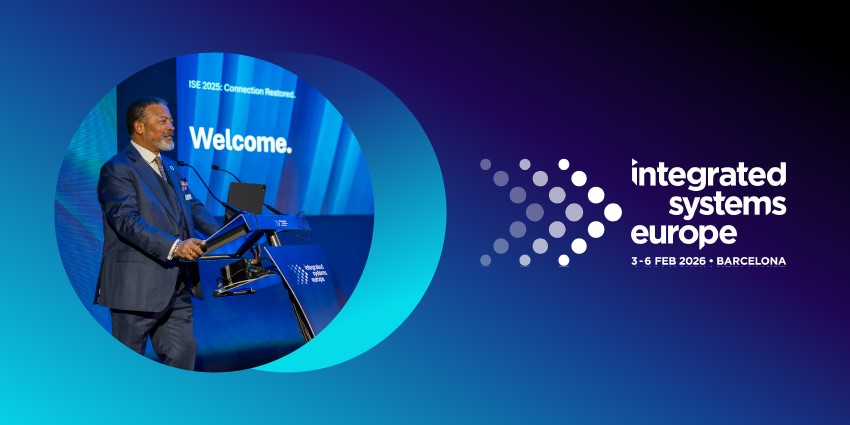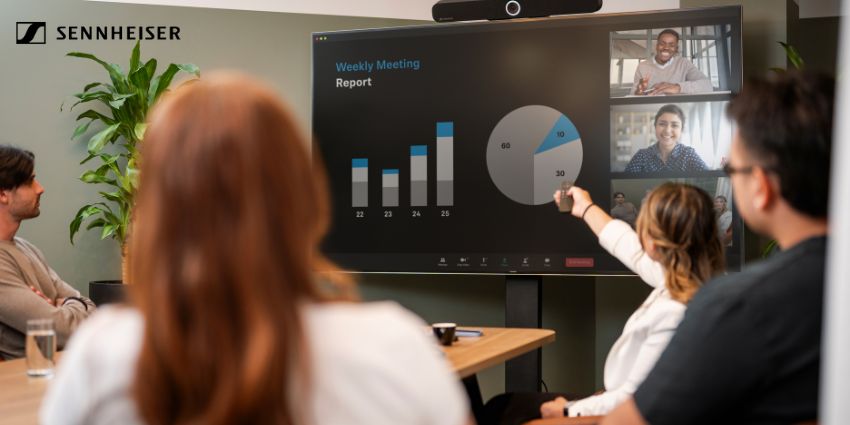The modern workplace is morphing. Boardrooms, once dedicated to closed-door meetings, are beginning to double as broadcast-quality studios, embodying hosts of town halls, podcasts, livestreamed all-hands and internal talk shows.
This transformation is underpinned by the rise of broadcast-grade AV and its seamless union with IT, AI, and AV-over-IP. But as the tech advances, business adoption no longer hinges solely on quality. Success now demands serviceability, security, and a considerate support ecosystem that can sustain the glamour in everyday operations.
Why Broadcast AV Has Gone Mainstream
The last five years have seen corporate AV undergo a transformation arguably as profound as the move from telephony to unified communications. The pandemic acted as a forcing function, normalizing high-quality video engagement for employees and customers alike. Overnight, organizations were compelled to master livestreaming town halls, running global webinars, and producing internal content that didn’t just connect but captivated.
That acceleration established new expectations. Audiences accustomed to Netflix, YouTube, and professional live streams began demanding similar polish in workplace settings.
“Boardrooms and meeting rooms are increasingly being repurposed as multifunctional spaces, hosting everything from town halls to internal events,” explained Faye Bennett, AV and collaboration analyst and Founder and Managing Director of Faye Bennett Consultancy Services. “That naturally brings in a need for more event-grade, even broadcast-quality, AV tech.”
Since then, tech curves have converged. AV-over-IP matured into mainstream deployment, enabling flexible distribution of high-quality signals across business networks. Hardware costs have generally fallen (albeit with the glaring caveat of the Trump administration’s tariffs). Likewise, software-driven production tools have made what was once the preserve of broadcasters viable for internal comms teams.
Yet adoption has been about more than price. It’s also tied to workplace strategy. As Bennett noted, flexible and attractive office spaces have become central to return-to-office initiatives, spaces designed to engage staff, not just house them. Broadcast-grade AV delivers that edge.
Polished Content, Plain-Spoken Support
Corporate comms has matured. Technologies like NDI (Network Device Interface) now enable broadcast-quality streaming across IP networks with pro-grade performance, metadata support, and extensive hardware integrations, a shift adopted by organizations and sectors as varied as Siemens and esports platforms.
Institutions that once struggled to move from SDI to IP-based workflows are now doing it fluently, unlocking real-time, scalable video production capabilities.
In tandem, enterprise-grade production tools, such as Magewell’s Director Mini and Director One, which integrate multi-camera switching, graphics, replay, streaming, and recording into a single device, are democratizing studio-grade production for businesses. What once required entire broadcast crews can now be run by in-house staff, provided the support structure is in place.
But as Bennett emphasized:
You can install the best kit in the world, but if the end user can’t operate it, or if there’s no infrastructure to support and maintain it, the value just isn’t there.”
Bennett’s words underscore the essential truth that high production value needs high-value supporting services.
Supportability Is the Secret Amplifier
We’re experiencing a seismic shift in AV support paradigms. Where AV-over-IP once arrived with complexity, today we’re seeing support services catch up, spurred in part by pandemic-era demand for remote monitoring, management, and diagnostics.
“It’s not just about making things work anymore. It’s about securing them, scaling them, and aligning with cybersecurity standards like the Common Vulnerability Scoring System,” said Bennett. In other words, operating broadcast-level systems in a corporate setting requires professional, resilient maintenance frameworks.
Bennett predicted that as broadcast AV becomes commonplace in corporate spaces, a “new ecosystem of support services (will emerge), whether it’s functional break-fix support, training, or helping staff adopt and run something like an in-house podcast studio.”
Indeed, leading systems integrators already offer such managed services. For instance, Ross Video delivers modular, scalable control-room platforms, like Ultrix, Carbonite switching, XPression graphics and PTZ robotic cameras, with ongoing technical support, giving organizations studio capabilities without constant external operators.
Meanwhile, at the 2025 AV/IT Summit, industry leaders highlighted the convergence of AV and IT, cybersecurity risks, and the need for “secure-by-design” AV systems, further attesting that broadcast-grade tech must be deployable and secure.
Broadcast Quality for All: Democratization Meets Strategy
Once sequestered in TV studios and large tech firms, broadcast-grade AV is now finding its way into small and mid-sized offices, powered by what Bennett deftly described as the “age of content.”
As Bennett observed:
We’re living in the age of content. Live streaming, podcasting, and video creation are all part of how businesses communicate now.”
Some companies that used to rent hotel boardrooms for big events are now building internal event-grade capability. “Now they’re exploring how to recreate that kind of event internally with more advanced AV tools,” Bennett elaborated.
This democratization is driven by accessible technology. IPMX and NDI enable interoperable, high-resolution signal distribution over commodity networks.
Meanwhile, integrators deploy hyperconverged IP switchers, like Ross Video’s Ultrix Acuity and Carbonite, that support multiple formats (SDI, NDI, ST 2110, soon IPMX) within a single chassis, minimizing footprint and maximizing flexibility.
These systems allow for scalable studio functions, such as multi-camera switching, graphics overlays, and studio control, that previously required dedicated facilities or external rentals.
As Bennett noted, “Ultimately, it comes down to the organization’s strategic goals.” If content creation and storytelling are critical, broadcast-grade AV moves from novelty to necessity. And as she added, “The tools are more accessible than ever, and I do think we’ll see more small and mid-sized businesses getting on board.”
Final Takeaway
In essence, the broadcastization of business communications is not just a matter of higher resolution or cinematic polish but an authentic strategic revolution. Critically, the transformation thrives not when kit is installed, but when it’s supported: accessible, secure, scalable, and integrated into the enterprise DNA.
Leaders across UC, AV, IT, and facilities must treat broadcast-grade AV not as a vanity exercise, but as a capability dependent on infrastructure, cybersecurity, and human adoption. The real broadcast-quality differentiation isn’t just what you show but how resiliently, reliably, and strategically you sustain it.







